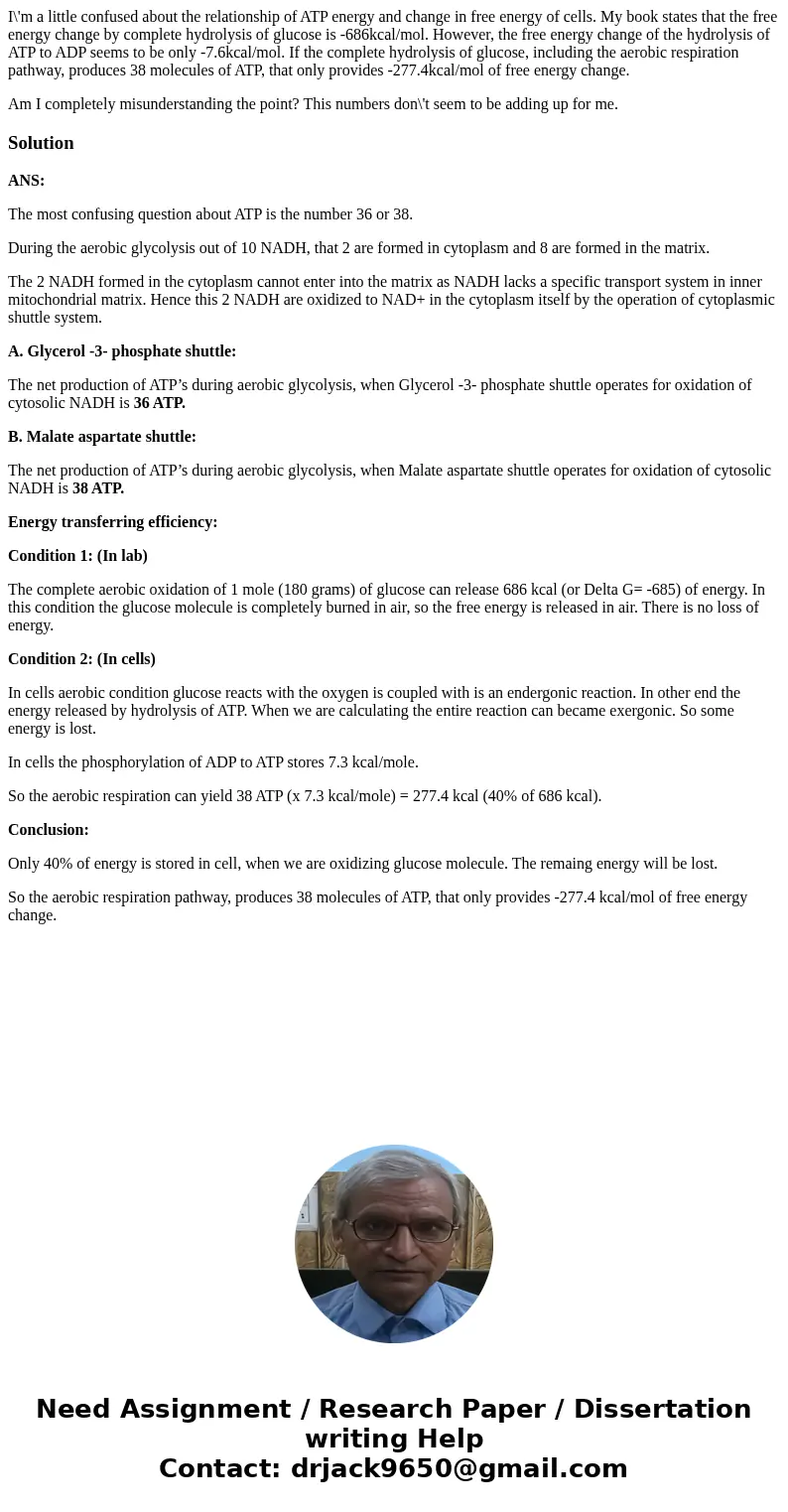Im a little confused about the relationship of ATP energy an
I\'m a little confused about the relationship of ATP energy and change in free energy of cells. My book states that the free energy change by complete hydrolysis of glucose is -686kcal/mol. However, the free energy change of the hydrolysis of ATP to ADP seems to be only -7.6kcal/mol. If the complete hydrolysis of glucose, including the aerobic respiration pathway, produces 38 molecules of ATP, that only provides -277.4kcal/mol of free energy change.
Am I completely misunderstanding the point? This numbers don\'t seem to be adding up for me.
Solution
ANS:
The most confusing question about ATP is the number 36 or 38.
During the aerobic glycolysis out of 10 NADH, that 2 are formed in cytoplasm and 8 are formed in the matrix.
The 2 NADH formed in the cytoplasm cannot enter into the matrix as NADH lacks a specific transport system in inner mitochondrial matrix. Hence this 2 NADH are oxidized to NAD+ in the cytoplasm itself by the operation of cytoplasmic shuttle system.
A. Glycerol -3- phosphate shuttle:
The net production of ATP’s during aerobic glycolysis, when Glycerol -3- phosphate shuttle operates for oxidation of cytosolic NADH is 36 ATP.
B. Malate aspartate shuttle:
The net production of ATP’s during aerobic glycolysis, when Malate aspartate shuttle operates for oxidation of cytosolic NADH is 38 ATP.
Energy transferring efficiency:
Condition 1: (In lab)
The complete aerobic oxidation of 1 mole (180 grams) of glucose can release 686 kcal (or Delta G= -685) of energy. In this condition the glucose molecule is completely burned in air, so the free energy is released in air. There is no loss of energy.
Condition 2: (In cells)
In cells aerobic condition glucose reacts with the oxygen is coupled with is an endergonic reaction. In other end the energy released by hydrolysis of ATP. When we are calculating the entire reaction can became exergonic. So some energy is lost.
In cells the phosphorylation of ADP to ATP stores 7.3 kcal/mole.
So the aerobic respiration can yield 38 ATP (x 7.3 kcal/mole) = 277.4 kcal (40% of 686 kcal).
Conclusion:
Only 40% of energy is stored in cell, when we are oxidizing glucose molecule. The remaing energy will be lost.
So the aerobic respiration pathway, produces 38 molecules of ATP, that only provides -277.4 kcal/mol of free energy change.

 Homework Sourse
Homework Sourse